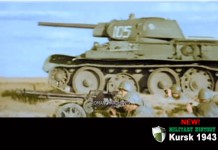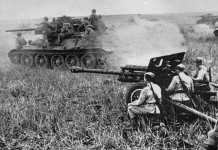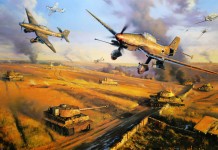
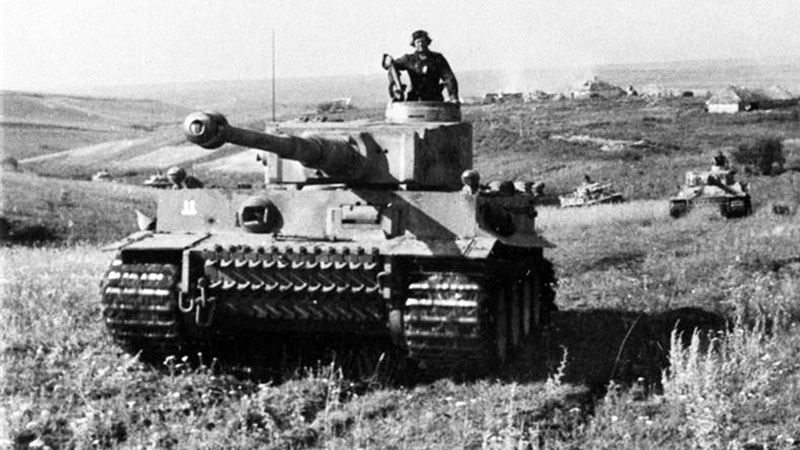

Commanding the 9th Army was General Walter Model a hard-driving, aggressive panzer commander. Born January 24, 1891, as the son of a music teacher in Genthin, Saxony, he fought in the Great War with distinction and quickly advanced his career, becoming Hitler’s expert in defensive warfare. Although a devout Nazi, he openly criticized Hitler’s Kursk Plan, with other generals, including the panzer expert Heinz Guderian, feeling that attacking was unnecessary, and the Germans should instead wait for the Soviets to launch their own offensive before defeating it. Model was also dubious about attacking with his 9th Army, pointing out that Konstantin Rokossovsky’s Central Front was strongly dug in and outnumbered him two to one in men, tanks and artillery.
As it turned out, indeed Model’s assault was a failure, as his Army quickly became enmeshed in the elaborate Soviet fortifications. [ismember]Having less armor, but more artillery than von Manstein had massed in the south, and fearing that the deep Soviet defenses would stall an armor-heavy attack, he decided to use his infantry to breach Rokossovsky’s line before unleashing his armor.
It did not work. The Germans took heavy losses to advance less than 12 km in seven days, and were unable to break through to open ground. Then only, Model threw his armor into the fray, but with little effect beyond incurring more casualties.
The Soviets had concentrated more of their strength facing Model in the north; and Rokossovsky had correctly anticipated where the attack would come, defending that sector most heavily.
[/ismember][nonmember]

[/nonmember][ismember]
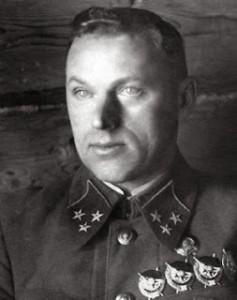
Marshal Konstantin Rokossovsky was born in Velikie Luki, a small Russian town, of Polish origin and started as a private soldier, but thanks to his military talent, courage and leadership, rose to high command and fame. A brilliant strategist, he was appointed commander of the Central Front that Stalin and entrusted to play the key part in the summer Kursk campaign. Rokossovsky was responsible for stopping the Nazi’s attack in the outskirts of Kursk, which actually became the turning point of the whole campaign in Russia.
Model’s main attack was delivered by 47 Panzer Corps, to which were attached 45 Tigers of the 505 Heavy Tank Battalion. Also supporting were 83 of the new giant Ferdinand tank destroyers, in their first operational blooding, which soon turned into an embarrassing fiasco.
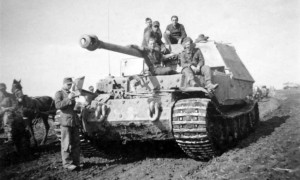
Ferdinands (also named Elephant), real steel monsters at 72 tons, they were reputed by their designer Ferdinand Porsche, capable to knock out a T-34 at a range of over 3000 meters, with its massive 88mm Pak43/2 L/71. Great hopes were placed on its firepower and heavy armor protection, designed to combat the heavy Russian tanks, which had raised havoc with German Panzers early in the campaign. However in its original configuration, the Ferdinand lacked a machine gun as secondary armament, making it prone to close-up attack by infantry tank-killer teams, in which the Soviets had specialized. Some crews tried to improvise by using a MG-42 to fire through the 88mm gun barrel, but unable to traverse, their steel monster remained highly vulnerable to the Soviet infantry crouching in their camouflaged foxholes. After shooting up the accompanying grenadiers, who suffered grievous losses, the Russians approached the unsupported vehicles and destroyed them with heavy explosive satchel charges. Thus on their first encounter, almost half of those Ferdinands were already out of action, either by Russian tank killer teams, mines or technical problems. Much too heavy to be towed from the battlefield, damaged vehicles were abandoned, prey for Russian expert examination, which drew important lessons how to destroy those mammoth beasts.
With some of the remaining Ferdinands still intact, a grenadier battalion led by Major Steinwachs, stormed a Russian outpost near the village of Alexandrovka, overcoming the outer defenses by crushing them with their weight. But the Soviet soldiers did not panic, letting the roaring tanks rumble over their trenches, they then rose to deal with the surprised grenadiers advancing in their wake. Officers frantically radioed for more tanks to relieve the hapless troops, but when those arrived they came under fire from camouflaged anti-tank guns, which had carefully held their fire until the Germans came into range. By evening the attackers had not only suffered heavy losses, but were totally exhausted. During the first day of the offensive, German units had penetrated only a mere 8 kilometers into the outer Soviet defenses, already deeply enmeshed in close-in fighting, but much more was to face them, as they faced the maze of trenches and fortified bunkers of the follow-on positions.
The following day the Central Front under Rokossovsky launched a counterattack against the German 47 Panzer Corps. The Red Army attacked with the 2nd Tank Army and the 19Tank Corps. After vicious fighting, the Soviet counterattack was finally stopped by the Tiger tanks of the 505th Heavy Tank Battalion.
One of the survivors remembers the shock of his encounter with his first Tiger: “Without warning, there was a tremendous explosion and a myriad of sparks were shooting into the air. The tank in front of us had been hit the most fearsome 88mm gun! The result was shattering to watch. The T-34, regarded by us tankers as an invincible steel monster, started to burn furiously so near to us frightening the life out of me. Fire everywhere! Exploding shells! Some of my closest friends were in that stricken blazing hull. I kept shouting, “Bail out, you silly buggers!” However, there was no living sign of them and I realized then that the guys in that burning steel coffin were already dead. This was real war, nothing would save me from meeting the same fate within minutes, as the German steel giants came right at us. I tried to shout to the gunner to aim and fire but there was no response, he seemed shocked,- frozen stiff with fear. But we were lucky bastards. The German Tiger advanced and hidden probably by the smoking hull next to us, seemed to ignore us and drove on with clanking tracks, passing the smoking wreck, in which our comrades died only seconds earlier. Determined to move ahead and live for another day, I began to nudge the stricken tank out of the way so we could pass. But the war was far from over that morning, more was to come and it seemed that survival at Kursk was not in the cards”!
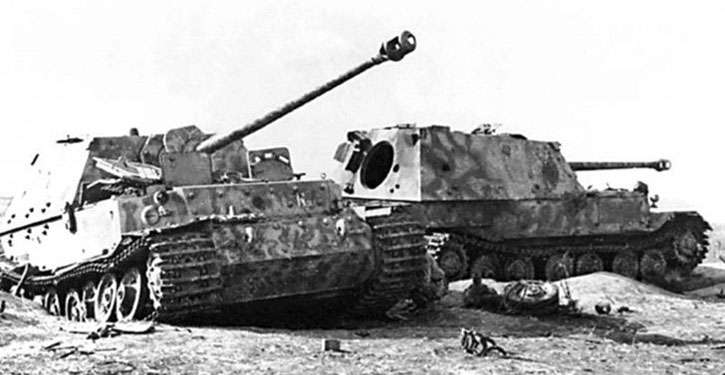
The next two days of the attack saw heavy fighting around the strong point of Ponyri (on the Orel–Kursk railway), which was one of the most heavily fortified positions in the northern sector. Both sides saw this area as a vital point. The Soviets had placed 70 anti-tank guns per kilometer in this region. Model paused to reorganize his units and renewed his attack with air support on 10 July, but the gains were small. Fresh Soviet formations had arrived to repel the German attacks and only limited penetrations were achieved. But as the German Panzer spearheads advanced towards the barren ridges of Ponyri Station, a Russian armada of nearly thousand armored fighting vehicles, tanks, self-self-propelled guns accompanied by massed infantry appeared with artillery firing over open sights at the German tanks.[/ismember]
The fight over the capture of this important vantage point reached its climax when the Germans stormed the fortified villages on a dominant hill. The savage fighting over the possession of the Hill continued for hours, culminating, when a Soviet force led by Colonel Teliakov’s 107 Tank Brigade fell into a well concealed Tiger ambush, which in minutes destroyed nearly half of the Russian force. The scene was horrifying, as tanks exploded, surviving crew members having extricated themselves from their burning hulks, frantically searched cover, only to be killed by the German grenadiers. But as evening fell, General Model’s attack had reached its deepest point and was stalled in front of heavy enemy fire from their multi-trench defensive position. Next day at dawn Rokossovsky, at last, launched his first massive strategic counter attack upon the Orel salient. It was a crucially decisive move that decided the fate of Model’s offensive ambitions.


